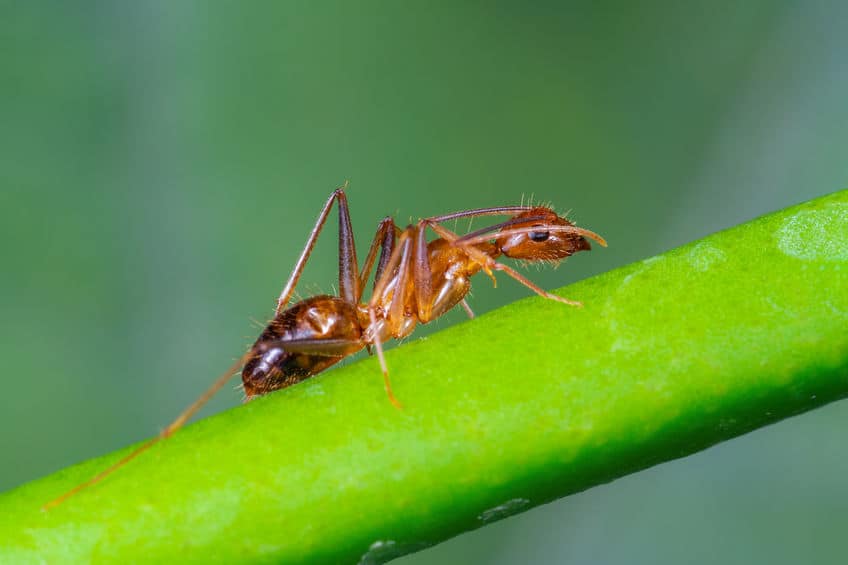Yellow crazy ants, Anoplolepis gracilipes, are also known as long-legged ants. They originate in Asia and are now found in many tropical regions.
Are yellow crazy ants an invasive species?
These ants are very adept at thriving in new environments. They have invaded and caused significant environmental damage in tropical regions such as Hawaii, northern Australia, and Christmas Island. They form huge supercolonies and are detrimental to many native species of fauna and flora. They are listed on the global invasive species database as one of the top 100 most invasive alien species. (source)
How did the yellow crazy ant get its name?
When disturbed yellow crazy ants move extremely erratically darting in all directions, hence their crazy appearance.

Are yellow crazy ants able to spread easily?
Known as budding their colonies are very efficient at spreading. This behavior is very similar to other ant species such as pharaoh ants. Because the colonies have multiple queens it is possible for a queen to take a breakaway group from the colony and establish a new nest. This makes them extremely successful at propagating and makes them very difficult to control. They can nest in settings as diverse as old drink bottles to hollows in trees. As a result, they easily spread to new environments and can be inadvertently moved to new areas on boats and trucks.
What do yellow crazy ants eat?
They are not specialists in what they can eat which allows them to thrive in diverse environments. They seek out sugary foods such as nectar and honeydew, but they also prey on a huge range of animals. Ant larvae are dependent on high protein food for their development. On Christmas Island, they attack and eat crabs and are now a serious threat to these species.
How do yellow crazy ants secure a supply of honeydew?
These ants farm scale insects. Scale insects feed on plant sap and produce honeydew as a by-product. This honeydew is very sweet and sought after by many insects. Yellow crazy ants have found a way to farm and secure a supply of honeydew by taking scale insects into their protection. They protect and disperse the scale insects in exchange for their honeydew. This is very advantageous for scale insects and yellow crazy ants but it is devastating for plants. Scale insects do significant damage to the plants they eat. The increase of scale insects as a result of their relationship with yellow crazy ants has done significant damage to the canopy on Christmas Island.
How do yellow crazy ants defend themselves?
They can spray formic acid. They are not very aggressive against their own species but are highly aggressive against other species and will fiercely defend their territory. One defense mechanism is to spray acid at potential threats. They can heavily reduce the population of other ant species in areas around their territory.
Why are yellow crazy ants seen as a threat in Australia?
A cost-benefit analysis conducted by the Queensland government in 2012 calculated that if left unchecked these ants could have a huge negative economic impact. This cost comes from a range of knock-on factors such as the loss of crops due to a reduction in pest eating insects and an increase in scale insects. Damage to machinery caused by their nesting habits such as broken air conditioners and farm equipment is also a factor. The costs excluded any loss due to tourism or decreasing property values.
Source: http://www.wettropics.gov.au/site/user-assets/docs/yellow-crazy-ants-lach–hoskin-spring-2015.pdf
